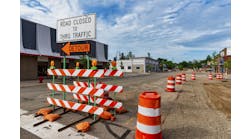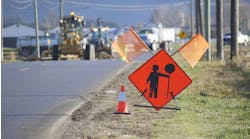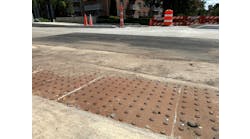As the world changes with the rapid advancement of connected devices and technologies, so must the transportation industry. In a business area where change is sluggish, DOTs across the country must adapt quickly to the evolving technologies that are going to impact their operations and budget.
The big three
There are at least three technologies that will have immense impact over the next two decades on how we travel, and how state transportation departments react to provide mobility—connectedness, Big Data and automation.
Whether it’s high-speed cellular technology, the growing network of the connectedness of physical objects, such as vehicles themselves, or GPS/cellular location services, the ability to directly connect vehicles to a variety of information services is here.
At the same time, Big Data is the result of connectedness. Every time we log into the Internet or use our smartphones, huge amounts of data is being generated and analyzed regarding our behaviors. Location reports monitor the millions of smartphones moving along in vehicles. Companies utilize this location data to provide real-time speed maps of the entire U.S. roadway system, as well as to identify accidents or other roadway incidents.
Automation and robotic technologies, while historically slower to evolve and impact transportation than personal devices, have still played a significant role in auto safety improvements on the highways. Electronic systems have resulted in much improved vehicle efficiency, including automation-enabled technologies such as air bags, electronic stability control and anti-lock braking. The next generation of automation is coming of age very soon, as auto manufacturers are rapidly advancing and testing the ability of vehicles that can drive themselves under certain conditions, such as in stop-and-go congestion and on freeways.
What does it mean now?
Decline in per-capita driving, emerging travel alternatives such as Internet-enabled ride-share options, and widespread funding uncertainty make this moment in the transportation industry difficult to navigate for DOT executives. Still, there are actions DOTs should implement now to begin preparing for the future transportation industry.
1. Establish partner relationships with transportation data/trip information companies;
2. Determine what data you are responsible for, and make it public. While transportation data companies will provide big data and analytics, DOTs will still be uniquely responsible for certain types of information;
3. Develop departmental TSMO, active traffic management and integrated corridor-management capabilities. As feedback on system performance becomes more available from Big Data analytics, the ability of agencies to actively manage the highway system will grow;
4. Partner in the development of cellular and fiber communications in transportation corridors. Almost all DOTs have implemented fiber backbone systems as part of their ITS investments over the last two decades;
5. Determine how to engage the emerging technology of connected vehicles. The U.S. DOT will likely require all new vehicles to incorporate Dedicated Short Range Communication (DSRC) capability by the end of this decade;
6. Make friends with your department of motor vehicles, especially if it happens to be in your DOT. DMVs have a large role as vehicles become more automated, because DMVs license vehicles and vehicle operators; and
7. Plan for the DOT workforce of the future. Adaptation for a private company is about survival, but for a government entity it’s about relevance and public trust. Consider engaging human resource experts to develop alternative workforce skill scenarios for 10 years out, 2025.
Finding common threads
State DOTs are facing their biggest mission challenge since the Interstate Highway Program in the 1950s. Increasingly rapid technological change is about to affect transportation in the same way it has changed other industries. While the future is an unknown, those organizations that can find the common threads leading to the future will best serve their residents and customers.


